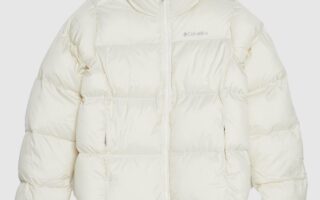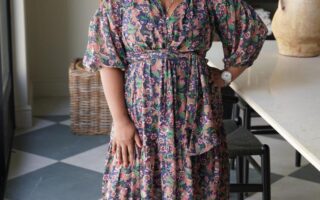The Edwardian era, spanning from 1901 to 1910, marks a captivating chapter in the history of fashion, where the silhouette of women’s attire transformed and social norms began to shift. Characterized by its elegant lines, intricate details, and luxurious fabrics, Edwardian women’s fashion was more than just a reflection of taste—it was a statement of identity and status. As the world edged into modernity, women found themselves at a crossroads between tradition and newfound freedoms. From the opulent gowns that graced the ballroom floors to the practical yet stylish ensembles for day-to-day life, every piece of clothing told a story. In this exploration of Edwardian women’s fashion, we will delve into the trends, materials, and social influences that shaped an era, revealing how this distinctive style laid the groundwork for the fashion movements that would follow.
Table of Contents
- Exploring the Silhouettes: An Insight into Edwardian Dress Styles
- Fabrics and Textures: The Allure of Edwardian Material Choices
- Accessories that Define: The Role of Belts, Hats, and Gloves
- Embracing Color Palettes: Understanding Edwardian Fashion Trends
- Q&A
- Wrapping Up
Exploring the Silhouettes: An Insight into Edwardian Dress Styles
The Edwardian era, spanning from 1901 to 1910, marked a significant shift in women’s fashion characterized by its opulence and refinement. Silhouettes of this time were defined by the dramatic hourglass figure, which was achieved through the use of tightly laced corsets and the introduction of fuller skirts. Fabrics such as silk, satin, and lace were commonly utilized, resulting in garments that were not only stunning but also structurally intricate. The aesthetic emphasized feminine curves while also aligning with the cultural ideals of the period, which celebrated both elegance and propriety.
Key elements of Edwardian women’s fashion included:
- The S-bend silhouette: A new corset style that created a curve from bust to hip, presenting a more pronounced figure.
- Elaborate embellishments: Dresses were adorned with lace, embroidery, and beading, showcasing artisanal craftsmanship.
- Tailored suits: These were increasingly popular among women, reflecting a shift towards more practical and versatile styles for various occasions.
In daily attire, a staple piece was the tea gown, designed for comfort and informality, allowing for ease during social gatherings at home. The evening gown, on the other hand, radiated sophistication, often featuring low necklines and flowing trains that echoed the grandeur of the elite lifestyle. The intricate pattern of fashion in this era paints a vivid picture of a society in transition, where the liberation of women began to subtly influence their style and choices.
Fabrics and Textures: The Allure of Edwardian Material Choices
The Edwardian era is renowned for its innovative and luxurious fabrics, which played a pivotal role in shaping women’s fashion during the early 20th century. This period saw a departure from the rigid structures of previous decades, embracing soft silhouettes and comfortable wear. The use of materials was a testament to both craftsmanship and the advancements in textile technology. Common choices included:
- Satin: A glossy fabric that exuded elegance.
- Silk: Known for its smooth texture and luxurious feel.
- Lace: Intricate and delicate, often used for embellishment.
- Velvet: Soft and richly textured, perfect for evening wear.
- Cotton: A versatile option for everyday garments.
Textures, too, played a crucial role in achieving the desired aesthetic. The combination of different fabrics created a layered visual appeal, often seen in the elaborate gowns of the era. Costume designers favored contrasting textures to enhance the overall look, highlighting the skilled artistry behind each creation. To exemplify the material choices, consider the following characteristics of select fabrics in Edwardian fashion:
| Fabric | Characteristics | Usage |
|---|---|---|
| Silk | Soft, lustrous, and lightweight | Gowns and delicate blouses |
| Lace | Intricate patterns and sheer | Overlay on dresses and details |
| Velvet | Rich, pile texture, and warmth | Evening dresses and wraps |
| Satin | Shiny surface with soft drape | Formal gowns and evening attire |
Accessories that Define: The Role of Belts, Hats, and Gloves
In the Edwardian era, accessories were not merely embellishments; they were essential elements that completed a woman’s ensemble, accentuating her style and status. Belts played a pivotal role in shaping silhouettes, often cinching the waist and highlighting an hourglass figure. Commonly adorned with elaborate buckles or artisanal embroidery, these belts could transform even the simplest dress into a statement of sophistication. Hats, too, were indispensable, ranging from delicate bonnets to grand feathered creations. A well-chosen hat could convey a sense of occasion and social standing, often adorned with flowers, ribbons, or netting to capture the essence of the moment.
Moreover, gloves were a symbol of social decorum, wearing them was essential for any formal gathering. Typically made of silk, lace, or leather, gloves were available in various lengths, from dainty wrist-length to elegant elbow-high styles. The choice of glove could speak volumes about a woman’s taste and propriety, often color-coordinated to complement the attire. In a society where appearance was paramount, these accessories served as extensions of a woman’s identity, marking her place in the intricate tapestry of Edwardian fashion.
Embracing Color Palettes: Understanding Edwardian Fashion Trends
The Edwardian era is often characterized by its exquisite and innovative use of color palettes, which had a significant influence on women’s fashion. This period, spanning from 1901 to 1910, saw a delightful interplay of vibrant hues and soft pastels that reflected the shifting social dynamics and artistic movements of the time. Rich jewel tones such as emerald green, deep burgundy, and royal blue were frequently used alongside lighter shades like powder pink, cornflower blue, and cream. These combinations enriched garments with depth and personality, allowing for individual expression within the confines of the era’s strict fashion etiquette.
Furthermore, the evolving trends in dyeing techniques opened new avenues for fashion designers, allowing for more daring combinations. Fabrics were often layered to create a three-dimensional effect, utilizing varying shades of the same color or harmonious contrasts to draw attention to exquisite craftsmanship. Popular materials such as silk, lace, and satin contributed to the luxurious feel of garments and could be seen in dresses that featured intricate detailing. These palettes were not merely choice of color but rather a reflection of the confidence and creativity that defined Edwardian women’s fashion, shaping an aesthetic that was both sophisticated and refreshingly modern.
| Color | Emotion/Association |
|---|---|
| Emerald Green | Lively, Fresh |
| Deep Burgundy | Luxury, Power |
| Powder Pink | Romance, Femininity |
| Cornflower Blue | Calm, Serenity |
Q&A
Q&A: Exploring Edwardian Women’s Fashion
Q: What defines Edwardian women’s fashion?
A: Edwardian women’s fashion is characterized by its emphasis on elegance and sophistication, reflecting the social and artistic movements of the early 20th century. Spanning from 1901 to the outbreak of World War I in 1914, this era saw the rise of structured silhouettes, intricate embellishments, and luxurious fabrics. Corsets, flowing skirts, and elaborate hats were staples, while the “S-curve” silhouette emphasized a woman’s hourglass figure.
Q: How did societal changes influence fashion during the Edwardian era?
A: The Edwardian era was marked by significant social change, including the women’s suffrage movement and increasing participation of women in public life. As women began to assert their identities beyond traditional roles, fashion evolved accordingly. The introduction of simpler lines and more practical ensembles, like tailored suits and shirtwaists, reflected a shift towards comfort and mobility while still conveying status and femininity.
Q: What were some popular materials used in Edwardian women’s clothing?
A: Fabrics like silk, satin, and cotton were highly sought-after, often adorned with lace, embroidery, and tucks. The use of fine materials was a way to display wealth and social standing. Additionally, the rise of innovations in textile manufacturing allowed for the introduction of prints, leading to more colorful and expressive garments.
Q: How did accessories play a role in Edwardian women’s fashion?
A: Accessories were crucial to complementing and elevating Edwardian outfits. Large, ornate hats adorned with feathers, flowers, and ribbons were very fashionable; they could even dictate the shape and style of clothing. Gloves, parasols, and jewelry also formed essential components of a woman’s ensemble, serving to assert her taste and social status.
Q: Did Edwardian fashion have any notable designers or influences?
A: Yes, figures like Charles Frederick Worth, often regarded as the father of haute couture, influenced the industry by introducing the concept of fashion houses and organized collections. His designs exemplified the luxurious aesthetics of the Edwardian era. Additionally, the aesthetic movement emphasized beauty and artistic expression, inspiring elaborate and whimsical design elements across the fashion spectrum.
Q: How did children’s fashion reflect Edwardian style?
A: Children’s fashion during the Edwardian era mirrored adult styles, with a focus on formal, tailored outfits. Girls wore dresses reminiscent of their mothers’ gowns, often with puffed sleeves and ruffles, while boys sported sailor suits and knee-length trousers. This mirroring signified the importance of social class and family status, as children were styled to reflect their parents’ fashion sense.
Q: What impact did World War I have on Edwardian fashion?
A: The onset of World War I brought substantial changes to fashion. The need for practicality and functionality led to the decline of opulent Edwardian styles. Women began to opt for simpler, more utilitarian clothing, reflecting their growing independence as they entered the workforce. The war heralded the rise of modern fashion, setting the stage for the roaring twenties and a radical shift in feminine clothing.
Q: How can one recreate an Edwardian outfit today?
A: To recreate an Edwardian outfit, focus on key elements such as a high-necked blouse, a long, flowing skirt, and a structured corset for an authentic silhouette. Add accessories like a wide-brimmed hat, lace gloves, and beaded handbags for flair. Vintage shops or costume boutiques may offer pieces that reflect the era, or you could explore sewing patterns inspired by Edwardian designs for a more personalized touch.
Q: Is Edwardian women’s fashion still relevant in today’s style?
A: Absolutely! Elements of Edwardian fashion continue to inspire modern designers and fashion enthusiasts alike. The emphasis on craftsmanship and detail resonates with today’s focus on quality materials and sustainable practices. Furthermore, the era’s blend of femininity and practicality aligns perfectly with contemporary movements toward inclusive and versatile fashion.
This delicate interplay of history, social evolution, and artistic influence captures the essence of Edwardian women’s fashion, making it a rich topic for both discussion and inspiration.
Wrapping Up
As we draw the curtain on our exploration of Edwardian women’s fashion, we uncover a vibrant tapestry that transcends mere garments. This era, marked by grand soirées and garden picnics, was a period of transformation—not just in style, but in societal roles and perceptions of femininity. The layers of silk and lace were not mere fabric; they represented a woman’s place in the world and her burgeoning identity amidst the shifting tides of the early 20th century.
From the bustle that defined a silhouette to the intricate embroidery that adorned many a dress, each piece echoed the aspirations and challenges of its wearer. This exquisite period reminds us that fashion is more than aesthetics; it is a reflection of culture, history, and the enduring quest for self-expression. As we fasten our own waistlines and don our modern attire, let us carry a piece of that Edwardian spirit forward—an indelible link to the past that continues to influence the elegance of today.


